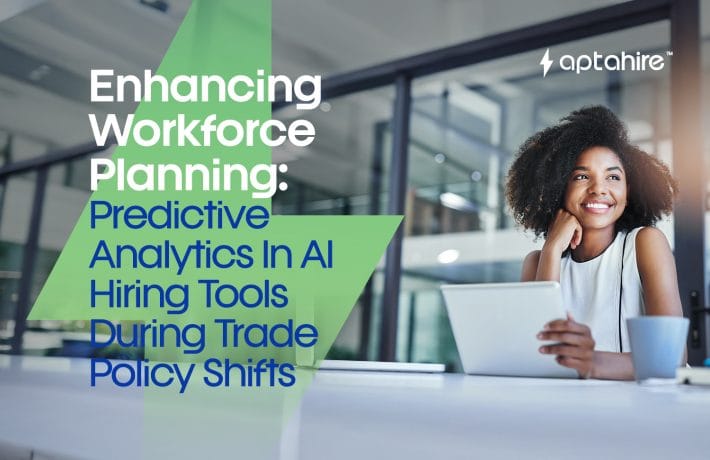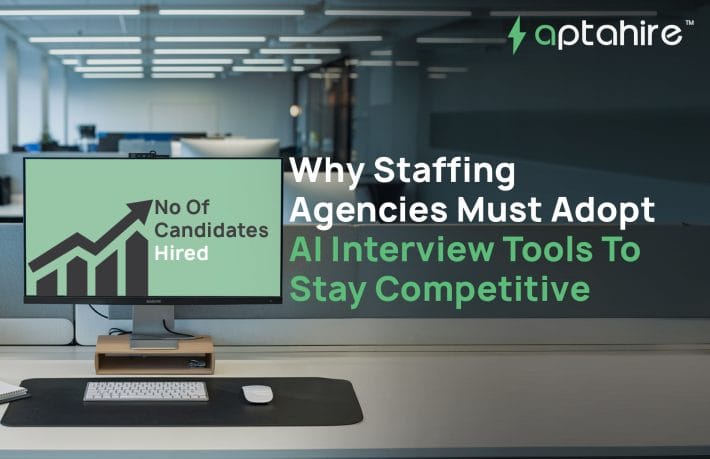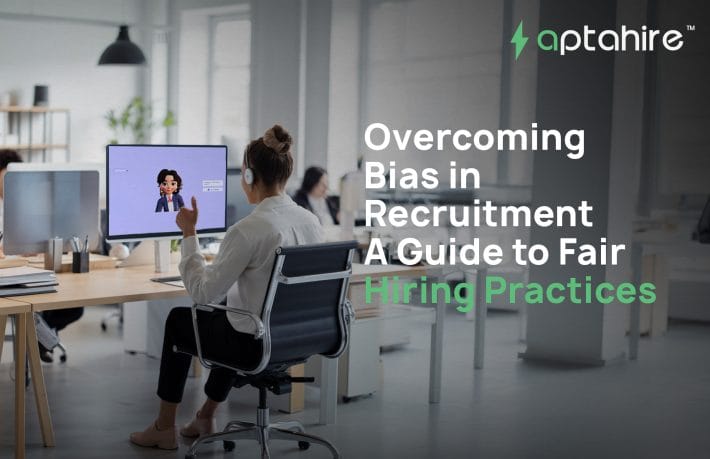How Predictive Analytics Helps in Assessing Candidate Performances in Hiring

Raghu is an HR Manager at the tech-firm named ThinkNow. He was facing a hard time finding the right candidates for his company’s vacant positions. Dealing with many applicants while having little time, Raghu often relied on his instinct and basic skill tests to make hiring decisions. But he noticed that most of his sure bets didn’t live up to the expectations, while a few other candidates who seemed average on their resume turned up becoming star performers.
Have you ever wondered how to determine whether a candidate will succeed in your company?
Well, predictive analysis is going to be your key in guiding your recruitment decisions. In today’s competitive job market, making the right hiring decisions is crucial, yet traditional approaches like intuition or basic skills tests are not so reliable.
Predictive analytics is one of the most interesting features of the Aptahire tool which helps in forecasting a candidate’s performance by analyzing the previous data and trends. This feature uses smart algorithms to predict future results. When it comes to hiring, predictive analysis understands a candidate’s potential performance, culture fit, and the long-term viability at your company by assessing the past performance, past data, and correlation with success. This approach goes beyond evaluating a candidate’s LinkedIn profile or looking at his resume.
How does predictive analysis work?
Multiple sources of data are collected through predictive analysis including previous employment and the candidate’s performance metrics. After which these data are analyzed using smart algorithms to find trends that could predict the candidate’s potential journey in your company. Now imagine being able to predict which candidate would perform better under pressure or who is more likely to remain in your company for an extended run, even before you are making an offer.
Advantages of Using Predictive Analytics in Hiring
Better Recruitment Decisions: Predictive analytics reduces uncertainty in hiring by using data driven insights helping you to make better decisions that are supported by real-time data.
Minimized Turnover: Accurately assessing a candidate’s performance and compatibility with your team could raise employee retention rates, thereby saving the company’s time and efforts in the long run.
Increased Productivity: Through predictive analytics, recruiters can efficiently filter through a vast pool of applicants and focus on those who have the most success potential.
Bias Reduction: Predictive analytics can help in reducing bias in the recruitment process, encouraging a more equitable and inclusive workplace, because it is purely based on data rather than subjective opinions.
Predicting the Candidate’s Performance Beyond the Resume
Picture yourself as a recruiter hiring for a marketing manager’s job, you have 2 applicants with almost similar qualifications and experience. Through predictive analytics, you can understand that candidate A performs well in high pressure situations, handling all the tasks with ease. Whereas Candidate B performs well in team setting but has issues managing the time effectively. With this data, you can come to a conclusion on which candidate fits well for the position, evaluate their strengths and weaknesses which will benefit the team.
How Does Aptahire Use Predictive Analytics
Aptahire smoothly implements predictive analytics into recruitment.
Data Collection: The Aptahire collects information from previous hires, performance assessments, and a few other sources to construct a thorough database.
Pattern Analysis: The tool uses smart algorithms to identify patterns that relate with high performance, such as specific skill sets, experiences, or even personality traits.
Predictive Performance: Finally, the tool applies these patterns to current applicants, providing a predictive score that indicates their likelihood of success in the role.
For instance, if your company has previously seen the best results from employees with strong leadership skills and a knack for problem-solving, Aptahire will prioritize candidates who exhibit these traits.
Ways to Integrate Predictive Analytics in Your Hiring Plan
1. Determine what success means in each of your roles to begin with. These could be customer satisfaction ratings, project completion rates, or sales goals.
2. Gather previous data from hires, including resumes, performance evaluations, and any other relevant information.
3. Make sure that your hiring team understands how to evaluate and use predictive analytics data in their hiring decisions.
4. To maintain the accuracy of your predictions, watch out for the performance of the new hires and make necessary modifications to your predictive models.
The Future of Hiring Process
There is a promising future in the hiring process by using predictive analytics. As technology advances further, these tools will become more precise and available, enabling companies of all sizes to utilize the power of data in their recruitment. We can expect the integration of AI, instant data analysis, and predictive models that can adapt in real-time to changing market conditions.
Find out how Aptahire could support you in finding your ideal team and predicting candidate’s success. Start now to eliminate uncertainty in hiring!
FAQs:
How does predictive analytics help in recruitment?
Predictive analytics anticipates an applicant’s performance in a position based on the past data and patterns, which allows companies to male better recruitment decisions.
Can predictive analytics reduce favoritism/ bias in recruitment?
While it doesn’t reduce bias completely, predictive analytics can minimize it by relying on data rather than subjective opinions.
How accurate is predictive analytics in recruitment?
Predictive analytics offers a more precise assessment of candidate performance than traditional approaches alone, but its accuracy depends on the kind and volume of data used.



